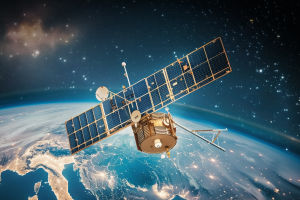Welcome, Lykkers! Exploration beyond our planet is becoming more thrilling than ever. An exciting new discovery by an international team of astronomers has revealed the existence of a promising new planet named HD 20794 d.
Located just 20 light-years from Earth, this super-Earth lies within the habitable zone of a star similar to our own Sun. This means it could possess the right conditions to support water in liquid form—a crucial factor in the search for life.
The Discovery of HD 20794 d
Two decades of patient observation have led to a breakthrough. The planet HD 20794 d was initially identified in 2022 under the leadership of Dr. Michael Cretignier from the University of Oxford. After extensive analysis and further confirmation, the planet has now been officially recognized as a strong candidate in the ongoing quest for potentially life-supporting planets outside our solar system.
This discovery was made possible through the use of advanced technology. Two key instruments—HARPS (High Accuracy Radial velocity Planet Searcher) and ESPRESSO (Echelle SPectrograph for Rocky Exoplanet and Stable Spectroscopic Observations)—played vital roles. Both instruments are installed at the La Silla Observatory in Chile and are designed to measure subtle shifts in starlight. These shifts reveal the gravitational tug of orbiting planets, including those that cannot be seen directly.
Why HD 20794 d Is Special
This planet is about six times the mass of Earth. Its location within its star’s habitable zone suggests that liquid water might be present on its surface. This area is often referred to as the “Goldilocks zone,” where conditions are neither too hot nor too cold for liquid water to exist—one of the building blocks for life as we understand it.
HD 20794 d also stands out due to its proximity. Being relatively close to Earth, it presents a valuable opportunity for further study using future space missions and next-generation telescopes. Researchers are especially interested in analyzing its atmosphere to detect any signs of activity that may hint at biological processes.
Challenges and Uncertainties
There are still questions to be answered. HD 20794 d follows an elliptical orbit, which causes fluctuations in its distance from the star. As a result, the surface temperature of the planet may change significantly during its orbit. These temperature shifts could influence the stability of any potential environment on the planet’s surface.
Although its rocky nature and potential for liquid water are promising, further investigation is needed. Scientists must determine if such temperature changes are within the range that can still support the essential processes of life.
Looking Ahead: New Eyes on the Universe
The future of planetary exploration is bright. Powerful new telescopes are being developed to study worlds like HD 20794 d in greater detail. These include the Extremely Large Telescope (ELT), the Habitable Worlds Observatory (HWO), and the LIFE (Large Interferometer For Exoplanets) mission.
These advanced tools will help detect atmospheric signatures—biomarkers—that could signal the presence of living organisms.
HD 20794 d has become a prime candidate for these upcoming missions. Its ideal location in a star’s habitable zone and its manageable distance from Earth make it a top target for atmosphere characterization and habitability studies.
Conclusion: A New Step Toward Cosmic Discovery
The confirmation of HD 20794 d’s existence marks a significant step forward in the search for worlds that may support life. With its potential to host liquid water and its accessibility for observation, this planet represents a compelling objective for scientists and future space explorations.
Lykkers, this is just the beginning. With more advanced technology on the horizon, and curiosity driving human exploration forward, who knows what other hidden gems the universe may hold? HD 20794 d may be one of many keys to unlocking answers about life beyond Earth—answers that could shape the future of science and humanity’s place in the cosmos.


